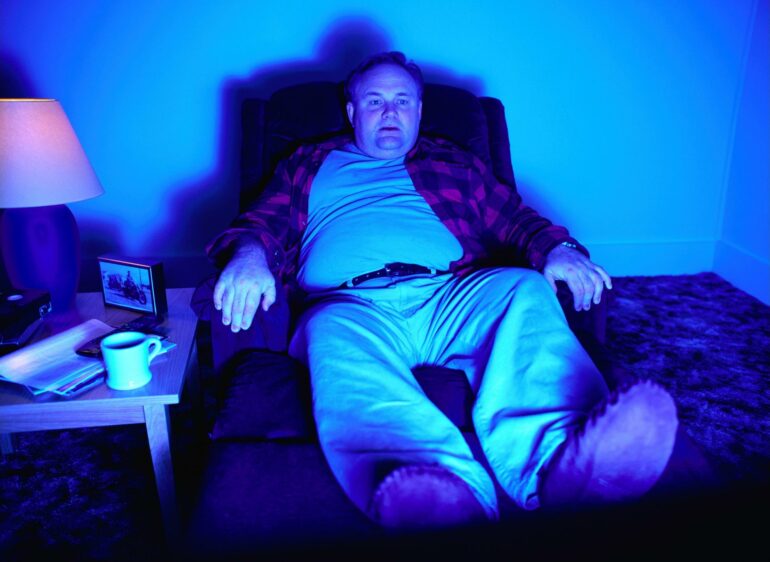Watching too much TV is associated with increased risk of coronary heart disease regardless of an individual’s genetic makeup, say a team of scientists at the Medical Research Council (MRC) Epidemiology Unit, University of Cambridge and the University of Hong Kong.
In a study published today in BMC Medicine, the researchers show that, assuming a causal link, 11% of cases of coronary heart disease could be prevented if people watched less than an hour of TV each day.
According to the British Heart Foundation, coronary heart disease is one of the U.K.’s leading causes of death, responsible for around 64,000 deaths each year. In the U.K., one in eight men and one in 15 women die from the disease. People with coronary heart disease are twice as likely to have a stroke.
One of the major risk factors for coronary heart disease is sedentary behavior—in other words, sitting for long periods of time rather than being physically active. To examine the link between time spent in screen-based sedentary behaviors such as TV viewing and leisure-time computer use, an individual’s DNA, and their risk of coronary heart disease, researchers examined data from the U.K. Biobank, a study that includes over 500,000 adults who have been followed up prospectively for about 12 years.
The team created polygenic risk scores for each individual—that is, their genetic risk of developing coronary heart disease based on 300 genetic variants known to influence their chances of developing the condition. As expected, individuals with higher polygenic risk scores were at greatest risk of developing the condition.
People who watched more than four hours of TV per day were at greatest risk of the disease, regardless of their polygenic risk score. Compared to these individuals, people who watched two to three hours of TV a day had a relative 6% lower rate of developing the condition, while those who watched less than an hour of TV had a relative 16% lower rate. These associations were independent of genetic susceptibility and other known risk factors.
Leisure time spent using a computer did not appear to influence disease risk.
“Our study provides unique insights into the potential role that limiting TV viewing might have in preventing coronary heart disease,” said Dr. Youngwon Kim, assistant professor at the University of Hong Kong, and visiting researcher at the MRC Epidemiology Unit, the study’s corresponding author. “Individuals who watch TV for less than one hour a day were less likely to develop the condition, independent of their genetic risk.
“Limiting the amount of time sat watching TV could be a useful, and relatively light touch, lifestyle change that could help individuals with a high genetic predisposition to coronary heart disease in particular to manage their risk.”
Dr. Katrien Wijndaele from the MRC Epidemiology Unit, last author of the study, said: “Coronary heart disease is one of the most prominent causes of premature death, so finding ways to help people manage their risk through lifestyle modification is important.
“The World Health Organization recommends reducing the amount of sedentary behavior and replacing it with physical activity of any intensity as a way of keeping healthier. While it isn’t possible to say for certain that sitting watching TV increases your risk of coronary heart disease, because of various potential confounding factors and measurement error, our work supports the WHO’s guidelines. It suggests a straightforward, measurable way of achieving this goal for the general population as well as individuals at high genetic risk of coronary heart disease.”
There are several potential reasons that might explain the link between TV viewing and coronary heart disease risk, say the team—and in particular, why no link was found with computer use. TV viewing tends to occur in the evening following dinner, usually our most calorific meal, leading to higher levels of glucose and lipids, such as cholesterol, in the blood. People also often snack more when watching TV compared to when surfing the web, for example. Lastly, TV viewing tends to be prolonged, whereas individuals using their computer may be more likely to break up their activity.
More information:
Youngwon Kim et al, Genetic susceptibility, screen-based sedentary activities and incidence of coronary heart disease, BMC Medicine (2022). DOI: 10.1186/s12916-022-02380-7
Provided by
University of Cambridge
Citation:
Reducing TV viewing to less than one hour a day could help prevent 11% of cases of coronary heart disease (2022, May 24)



